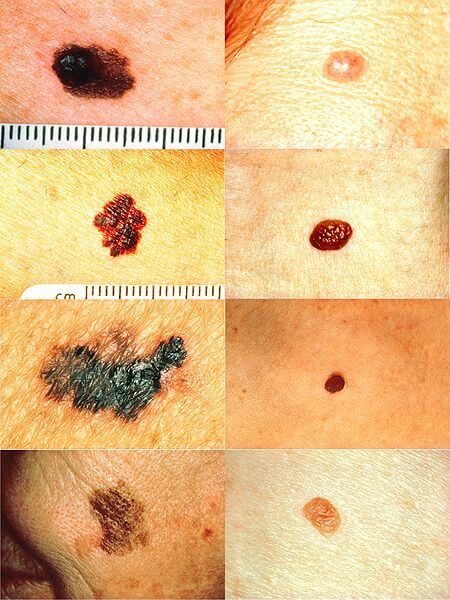The season of summer will soon be upon us, which is synonymous with people showing more skin. That’s because it’s also the time when temperatures soar and UV (ultraviolet) rays are the highest.

In addition to covering up with wide brim hats, long sleeve shirts and sunscreen to protect our skin, it’s also a great time to examine our bodies for early signs of skin cancer. There’s a good reason for this, and the stats are sobering. One person dies of melanoma every hour, and roughly 87,110 new cases of melanoma will be diagnosed this year in the U.S., according to the Skin Cancer Foundation.
X-rays and blood tests are not needed if you’re curious about your skin being at risk. Early detection is the best protection, and the best person to begin detecting is you. With eyes and a mirror you can start early preventative skin cancer screening anytime.
Related: Movie Villains Are Teaching Us Skin Problems Are Evil
The Harvard Special Health Report on Skin Care and Repair says the perfect time to examine your skin is right after taking a bath or shower. Checking your entire body is simple if you follow these five easy steps:
Step 1 — Start at the Top
Examine your face, neck, ears and scalp. Using a comb or blow dryer is the best way to get a clear view of your scalp. Get help from a from a friend or relative to help spot hard to see areas.
Step 2 — Use a Mirror
Look at your nude body in a mirror and closely check the front and back side. Then, look at the left and right sides of your body. After bending your elbow, carefully examine your fingernails, palms, forearms (also the undersides) and your upper arms.
Step 3 — Make Your Way Down
Move down to your body. Closely check the front side of legs and the back. Look carefully at your genitals and don’t forget to examine your buttocks.
Step 4 — Examine Your Feet
Continue to move down your body to your feet and check out your toes, the spaces between them, the soles of your feet and your toenails.
Step 5 — Assess Your Moles

If you have moles, be aware of where they’re located and be familiar with their shape, texture and how they feel. Be on the lookout for changes on your body and anything different, such as:
- a change in feel, size, shape or color of a mole you already have
- a slightly raised red or darker-colored flaky patch on the skin
- a sore that doesn’t heal
- a new mole that doesn’t resemble any of your other moles
- a new, firm, flesh-colored bump
Keep a record of all self skin examinations, and be sure to include notes about what your skin looks like as time goes by. Taking photos is also a good way to document the appearance of your skin and can help better chart things that change. If anything about your skin seems out of the ordinary, or if you have concerns or questions, consult your doctor.
Related: Too Many Melanoma Survivors Are Still Seeking Sun
Specific Signs of Melanoma

Melanoma is a serious cancer mostly because it’s difficult to treat, but checking for symptoms is as simple as reciting the alphabet. By following this ABCDE rule you can find out if you’re at risk for melanoma. Medical experts advise to see your doctor if you have pigmented skin, a birthmark or a mole with:
A = Asymmetry
This is what happens when half of your mole looks different from the other half.
B = Border
The edges will appear ragged, notched or blurred in outline. You may also notice that pigmentation might spread into the surrounding skin.
C = Color
The mole has several colors. You may see shades of black, brown and tan. There may also be areas of white, gray, red, pink or blue present.
D = Diameter
You might notice a change in the size of your mole, most likely an increase. While most melanomas are tiny, many are just larger than the size of a pea on average.
E = Evolving
Over the past few weeks or months, you have a mole that has changed.
Ronke Idowu Reeves is a writer and journalist who hails from Brooklyn, NY. Her news and entertainment stories have appeared on WABC-TV-New York, Fox News Channel, VH1, BET.com plus in Sundance Film Festival’s Sundance Daily Insider and People Magazine.


![How To: ‘Fix’ Crepey Skin [Watch]](https://cdn.vitalupdates.com/wp-content/uploads/2017/05/bhmdad.png)












